Discover Battery’s Lithium Blue LiFePO4, a premium drop-in

Discover Battery has been in the battery business since 1949, so they’re not new to the challenges of building batteries. They’ve recently begun distributing their Lithium Blue LiFePO4 battery in the U.S. and I’d say their experience shows in the quality of the product they’re delivering. Let’s take a look at what these batteries offer and how they’re different from what’s already available.
Discover’s first U.S. offering is their Lithium Blue line of LiFePO4 batteries. All Lithium Blue batteries have built-in Bluetooth radios to view your battery’s status via an app on your phone. The batteries are available in either group 24 or GC2 sizes. The group 24 batteries come in 12 (100 amp hour), 24 (45 amp hour), and 36-volt (30 amp hour) configurations. The GC2s are offered in 12-volt, 200 amp hour or 24-volt, 100 amp hour configurations. I’m not sure why the higher voltage G24 batteries lose a few watt hours of total capacity.

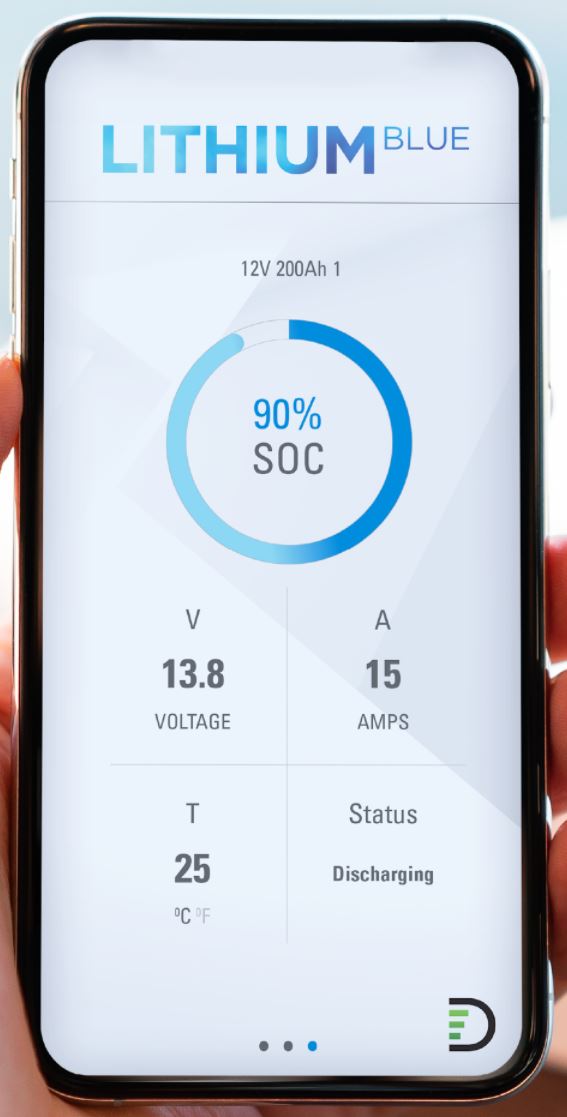
Lithium Blue batteries include a Bluetooth radio which, in conjunction with their app, shares information about the batteries. The app provides insight into the battery’s state-of-charge, voltage, current consumption, and temperature. Plus, in the event of a fault the app provides information on the fault. I think that last part is a big deal compared to most drop-in batteries without any mechanism to provide fault information.
Discover is positioning Lithium Blue as a quality battery at a reasonable price point. They produced a teardown video showing the differences between their batteries and the competitors. The video does a nice job showing what makes the Lithium Blues different. I believe the one in the middle is a Relion RB100 and I’m pretty certain the blue and gray battery is a Battle Born 100 amp hour battery.
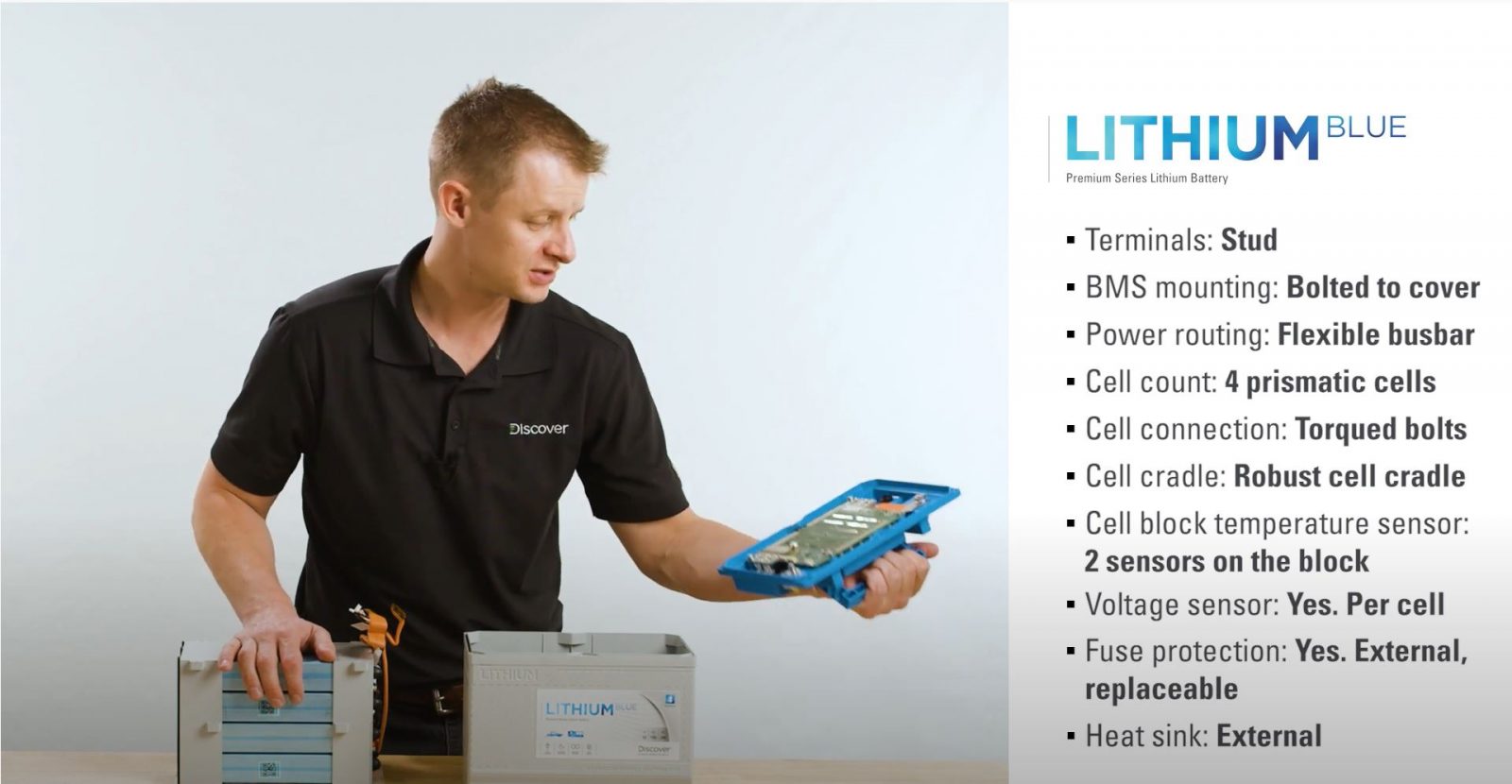
Watching the video the biggest takeaway for me was the amount of engineering Discover put into making a better battery. The battery case is designed to be opened, the battery management system (BMS) is in the lid of the battery, and the cells of the battery are replaceable. Placing the BMS in the lid allows for easy replacement of the BMS in the event of a fault. Plus, with the BMS in the lid, the top of the battery is a heat sink to allow passive cooling of the BMS.
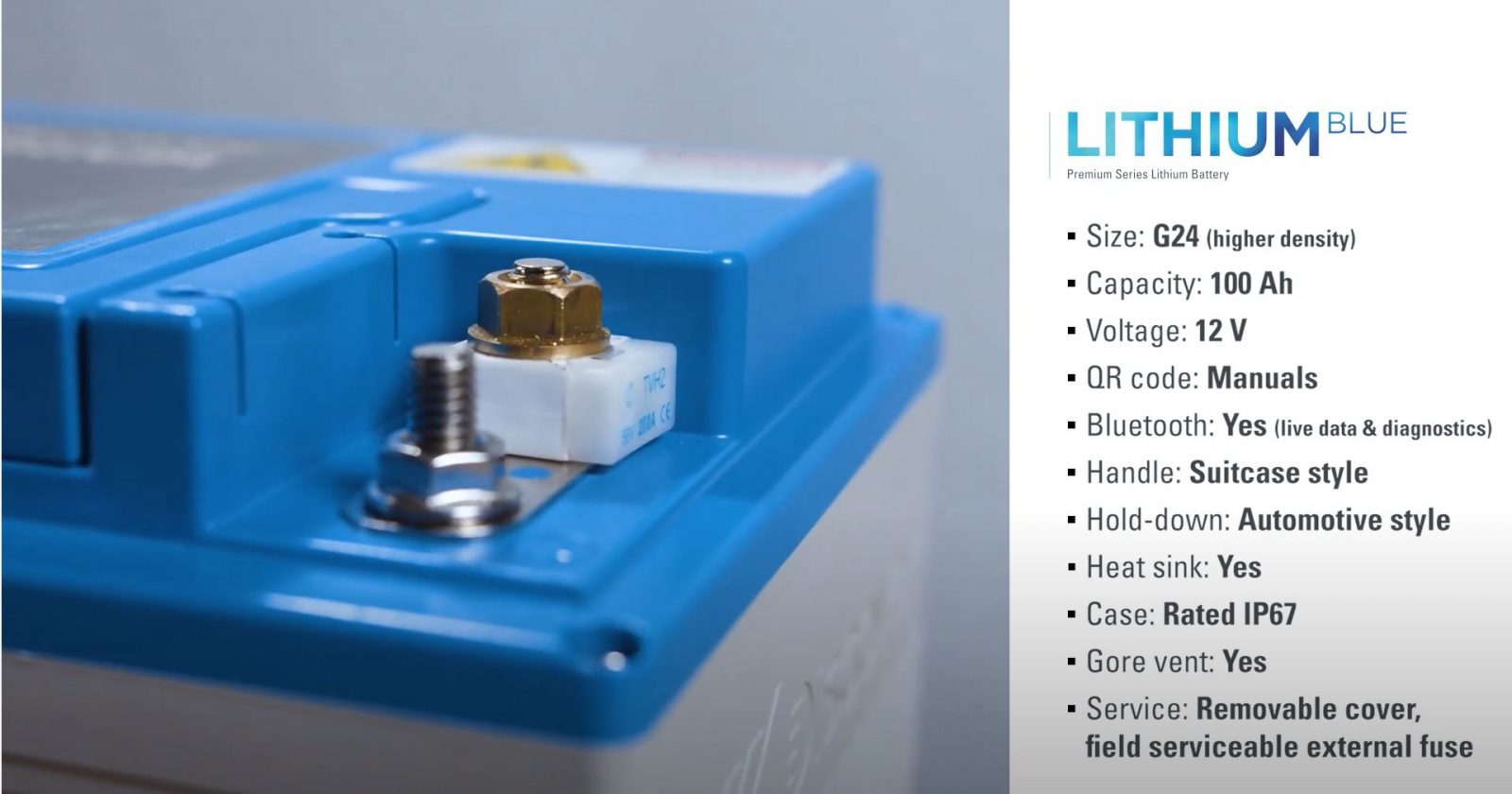

The user-replaceable fuse on the top of each battery enhances safety and helps protect the BMS. Unlike many batteries on the market, the use of a separate, easily replaced fuse ensures a fault is quickly disconnected. Also, the built-in, suitcase-style handle makes moving the batteries around easier. I really appreciate the comfortable and easy-to-grip handles on my Mastervolt MLi batteries.
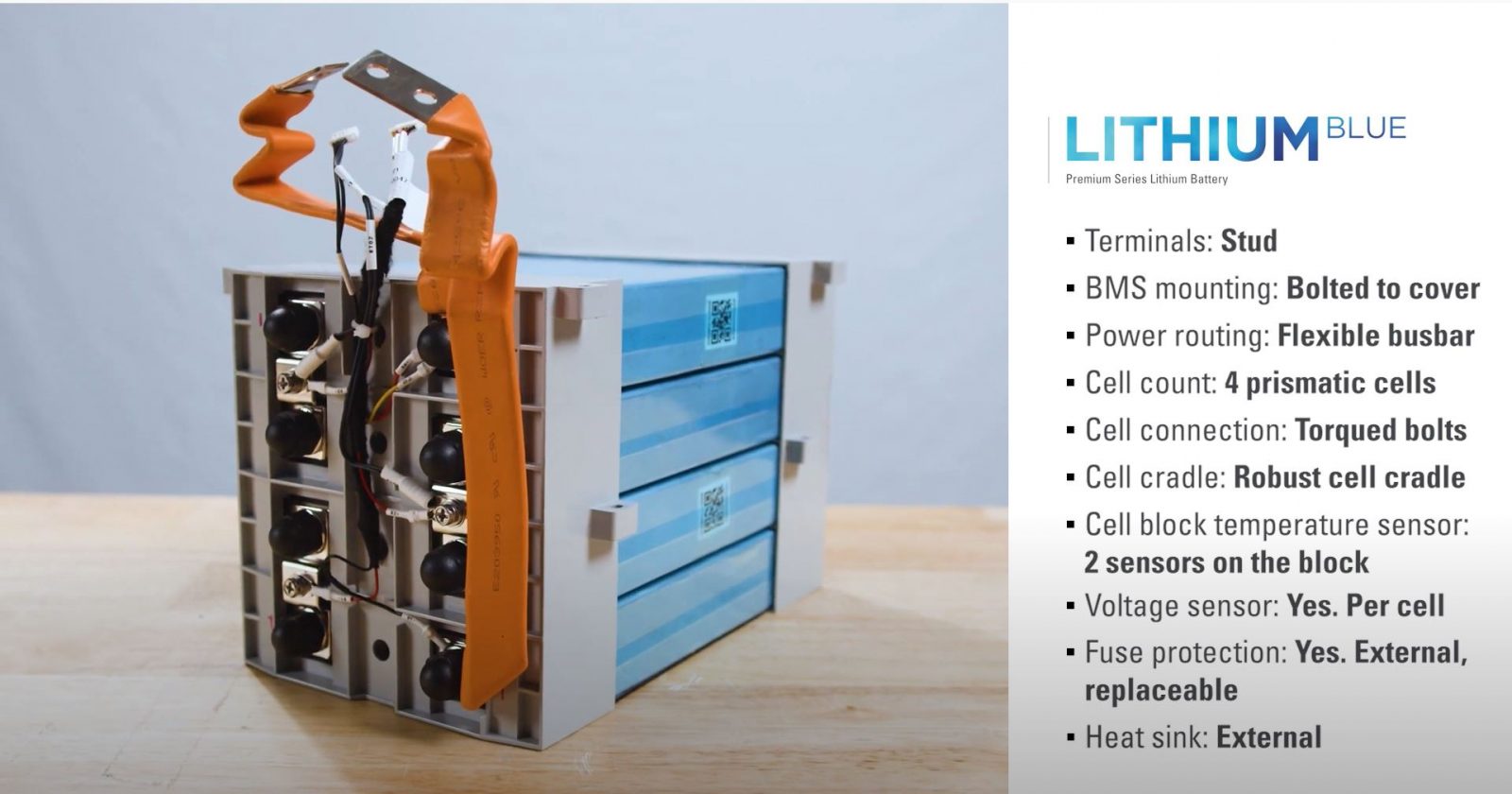
The Discover batteries use prismatic cells instead of the cylindrical cells competitor batteries use. Compared to similar capacity competitors, the Lithium Blues are smaller and I suspect that’s mostly because prismatic cells’ space efficiency.
Like many other LiFePO4 batteries, Discover advertises these as drop-in batteries. The natural assumption is that means these are drop-in replacements for lead-acid batteries. But, that doesn’t really tell the full story of a lead-acid to lithium conversion. A proper conversion requires modifying the charging system as I’ve done for Have Another Day’s move to lithium. Discover’s manual recommends against charging with lead-acid charging profiles and lists requirements like no equalization or temperature compensation. I recognize that drop-in is an industry-wide term, but I think it’s an inaccurate term that creates confusion.
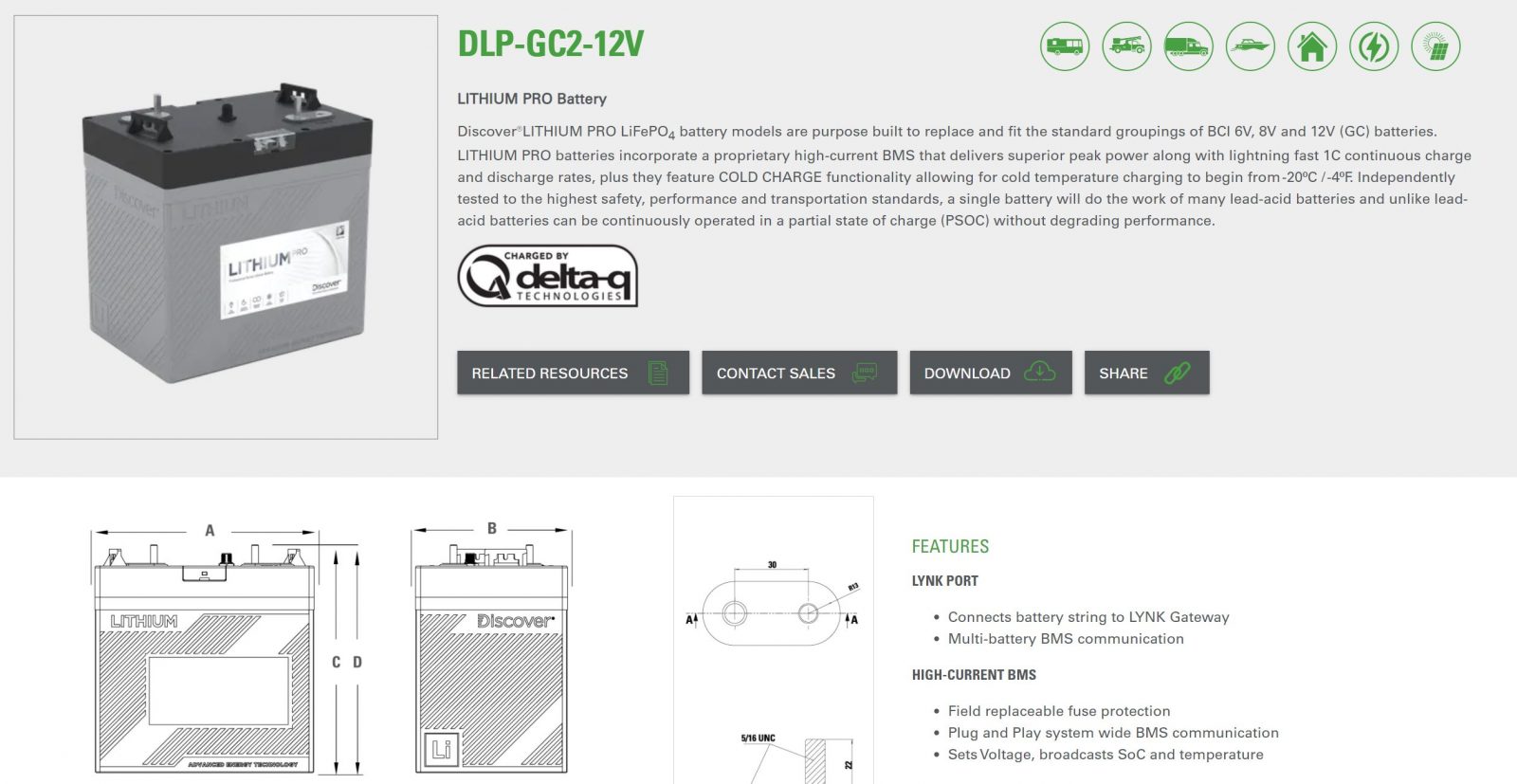
In addition to the Lithium Blue batteries, Discover has also announced Lithium Pro batteries with higher charge and discharge limits and external BMS communication. The external BMS communication will allow paralleled batteries BMSes to communicate with each other as well as allowing the BMS to communicate with connected inverters and charging equipment. The 120 amp hour, 12-volt, GC2 battery will support 200 amp continuous discharge. At 1.667C it’s among the highest discharge ratings I’ve seen for drop-in batteries.
I’m hoping to have the opportunity to test some of these batteries myself in the near future. Many of the features of these batteries remind me of the Mastervolt MLi series of batteries (with the notable exception of no CAN communication for Discover Blue batteries) at a price point that’s competitive. I’m looking forward to testing them and seeing if they’re as good in use as they appear on paper and in videos.




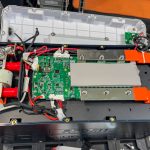








So, what’s the price point per amp hour?
RLW,
So far they don’t appear to be shipping yet but I did find at least one company with a pre-launch page up: https://www.solar-electric.com/discover-dlb-g24-12v-lithium-blue-battery.html?gclid=Cj0KCQjwxdSHBhCdARIsAG6zhlX05A7fU-qQ5ReOJyMuCbdHhMkRvHHAdZRyMxMPpSHG-bKAzqYC9GcaAhGFEALw_wcB.
They list the 100 amp hour, 12-volt battery for $989 or just under $10 / amp hour.
-Ben S.
For price comparison, cot per (k)Wh is much more relevant metric than somewhat arbitrary cost per amp hour. YMMV.
So, about 3x the cost of a comparable AGM. Can charging be managed with an existing installed external regulator such as a Balmar ARS-5 with charge parameters adjusted?
In terms of raw amp hour capacity, yes. But, the LiFePO4 has longer cycle life at deeper discharges. So, maybe 5-10x the cycle life at 80% DoD vs 50% DoD for AGM.
If you use the batteries, LiFePO4 will be cheaper in the long run. The easiest way to evaluate the cost is on a dollars per kilowatt-hour basis. But, for that comparison to become favorable, you have to consume a bunch of kilowatts and that means getting off the dock and using some juice.
-Ben S.
Ben, interesting article. I recently swapped my old Lifeline AGMs for Lithium. I selected Kilovault (https://kilovault.com/products/) HLX batteries. Seems the Bluetooth app is almost identical to the one shown by Discover. Looks like Discover and KV hitting the same quality lithium drop in segment. Rod Collins of MarineHowTo helped me get and install the KV batteries and I could not be happier in the setup.. not to mention removing almost 200 lbs of battery weight off the boat
What and how is communication accomplished with the charger and inverter? Bluetooth or wired? Is the communication brand specific? Can the BMS trigger an alert with a delay prior to disconnecting the battery to prevent a field surge (think alternator charging during the disconnect) from damaging electronics and charger? It looks to be a well thought out engineered product.
Thanks
Lithium Blue products don’t communicate with charge sources. The only communication they have is via Bluetooth to a mobile device for status. So, you’d need an alternator protection device to stop a disconnect event from hurting an excited alternator.
Their pro product will have CAN based communications with external charge sources.
-Ben S.
Looks like a real nice battery, but at $989 plus shipping for a 100 Watt 12V, this battery, it is more than $100 more than Battleborn, and about $700 more than SOK. I wonder if they have priced themselves out of the market. I note that Wind and Sun web page says that this price may change. I sure hope so.
Just to clarify, this (like the batteries you compared, so I think it’s just a typo) is a 100 amp hour battery. Also, it’s about $400 more than the SOK. I don’t personally think they’re priced out of the market at just under $10 per amp hour but time will tell. It seems to me they can clearly articulate what you get for the additional cost. For example, $100 for the field serviceability alone is going to be worth it to many. Also, compared to the SOK battery, these can be charged at double the rate.
I certainly hope that mainstream adoption will push the price of all these batteries down but I also see a reasonable value proposition at the current pricing.
-Ben S.
You are correct. I should have said 100 amp hour instead of watt.
To enlarge on my price comparison, SOK is $570 plus shipping, https://www.sokbattery.com/products/100ah-12v-lifepo4-deep-cycle-battery
and Battleborn is $799 shipping included
battlebornbatteries.com
Both are 100Ah 12V. SOK is listed as currently out of stock.
Yes, a bit more expensive, but it looks like a well engineered rugged product, using prismatic cells. Unfortunately, they seem to be made of unobtainium. Calls and emails to Discover Batteries have gone unanswered and dealers seem to be rare. I talked to a salesman at the only dealer web site that that I could find that had a listing for the Lithium Blue series, https://www.solar-electric.com
and he said they haven’t got a delivery date on their order from Discovery.
If anyone gets a lead on a stocking dealer please post here.
After devouring their User and Installation manual, if these batteries meet specs and can be installed as implied, they would seem to negate the need for external control of charging sources, external BMS, and external monitoring, and thus make the whole MasterVolt, Victron, and even the Discover Pro version of this product overkill and unnecessary.
whoops, showstopper from their website:
“ Do not use LITHIUM BLUE to start an engine. Doing so will cause irreversible damage to the battery”
Ben, how can you call them a premium battery or compare them to MasterVolt with this Achilles heel?
Lawrence,
Every LiFePO4 battery manufacturer that I know of doesn’t recommend using their batteries for engine starting. Not all of them disclose this very loudly but if you speak to them and ask the question specifically I’m yet to come across one that says, “Yeah, that’s a good idea.” So, I don’t hold it against Discover that they don’t. In fact, I credit them for being up front with this information.
-Ben S.
Ben,
The two top quality lithium manufacturers, with the most experience that I am familiar with, Lithionics and MasterVolt, seem to disagree.
In fact, Lithionics proclaim upfront in their literature “Worry-Free Power for Engine Cranking”. And I just got off the phone with MasterVolt who could not think of a reason why not to either.
I think the confusion is that the biggest beneficiaries of lithium are cruising sailboats that want them for their massive charge acceptance rate in charging house batteries. And the most elegant way to do that is start the engine and let their high output alternator(s) charge the battery in the shortness amount of time, and then shut down the engine.
Quite different than your application which seems to use a genset driven battery charger or small output alternator?
Ours is the sailboat application. And its kind of silly to think you would put an intermediary device between that alternator source and the house battery that only has limited current pass through. E.g. in our case with twin 150A alternators we want all that 300A in the battery in the shortest amount of time.
Are you only thinking of drop-in batteries perhaps? For these guys that is certainly true. The reason they don’t recommend it is because they can’t do it. My present understanding is its their lightweight BMS implementations that are forced to relay on solid state relays.
Just compare the big external BlueSeas RBS safety relays required by MasterVolt rated at 500A continuous with the size of a drop-in battery case.
Not so sure about Discover being up front about that, I could not find it anywhere in their manual and only came across it as a small FAQ line in a separate promo email.
I could have saved a lot of time by seeing it in the manual which usually is the last word.
I’ve been advised by Victron (as has Ben Ellison in his conversations with them) that LiFePO4 batteries aren’t well matched to short-duration, high discharge loads like engine starting and thrusters. I’ve received the same advice from numerous other manufacturers. Until this post I would have told you Mastervolt is one of them. I can’t swear to it, so I’ve asked them again for their thoughts.
I don’t think it’s accurate to say that cruising sailboats are the biggest beneficiaries, or rather, I don’t know that you or I are able to say who benefits most. There are benefits for cruising sailboats, cruising powerboats, fishermen using trolling motors and many other applications. Some benefits are relevant to only some uses while other benefits are nearly universally enjoyed.
For my application on a power boat, one of the biggest benefits is the flat charge acceptance curve. Regardless of where my charge sources come from, with FLA I had to run engines (generator or mains) longer than I wanted to complete charge cycles. LiFePO4 alleviates that pain.
While I certainly agree that in a vacuum, the best option for charging from a propulsion engine is directly from alternator to batteries. But, other factors can change the final design. These factors can include budget, the way a boat is used, and the availability of other charge sources.
-Ben S.
Like any good product these LiFePO4 batteries (and most LiFePO4 batteries discussed & used in marine/RV applications) were designed for a specific use case. That is as a replacement for “deep cycle” lead acid house batteries in off-grid solar, marine, and RV applications. So, not sure why one would say that wanting to use a class of product for something for which it was not designed is a showstopper.
BTW, there are lithium batteries designed for engine starting. Typically targeted at the race car market. Here’s just one: https://antigravitybatteries.com/productline/starter-batteries/automotive/
Mic Fite, most sailors I know have transitioned from the House Battery + Start Battery paradigm, to House/Start Battery + Reserve/Start Battery. Where the House does it all and the Reserve/Start is just that – a reserve and emergency start. We have been that way for decades. See Ron Collins diatribe on this point. So I am not sure this product is well designed for cruising sailboats these days.
I could not find Ron Collins’ comments that you referenced. I am interested to read it if you have a link.
Probably the biggest markets for these types of LiFePO4 batteries are off-grid solar and RV. I imagine marine applications are a distant third. So design & cost trade offs would favor those larger markets.
I am all for the House/Start Battery + Reserve/Start Battery setup.
As has mentioned elsewhere on Panbo and on web sites devoted to LiFePO4 batteries, the BMS limit their max current out for various reasons due to BMS design and/or CYA, and as Ben mentioned that makes them a poor match for short-duration, high discharge loads like starters and thrusters.
Regardless of this limitation, I find the advantages of LiFePO4 batteries for a house battery bank compelling enough to have a separate SLA start battery. But…. I’d love to get rid of having a separate battery for starting, and having to maintain a battery with a different chemistry and all of it’s associated charging, switching etc. so I’ve been researching using super capacitors in parallel. It’s probably overkill but fun to research. That’s a long term project though.
I wish I knew the sailors you know. Most of the sailors I know have the same traditional house+start battery that came with their boat and never give it a second thought. 🙁
RC says:
“But RC the guy down the dock says deep-cycle batteries cannot be used for cranking. Sadly, your dock-expert is misleading you on this. The key here is “a deep-cycle battery“, meaning single battery, and when most all house banks on boats over 25 feet these days are using multiple deep-cycle batteries you now have many more cranking amps in the house bank than you do in your typical starting battery. Even at 50% DoD a typical house bank will still have more cranking capability than a single starting battery. Unless you have massive diesel engines, or a very small single battery house bank, keep it simple and just crank off the house bank. You can now delegate bank #2 as a reserve/emergency bank.”